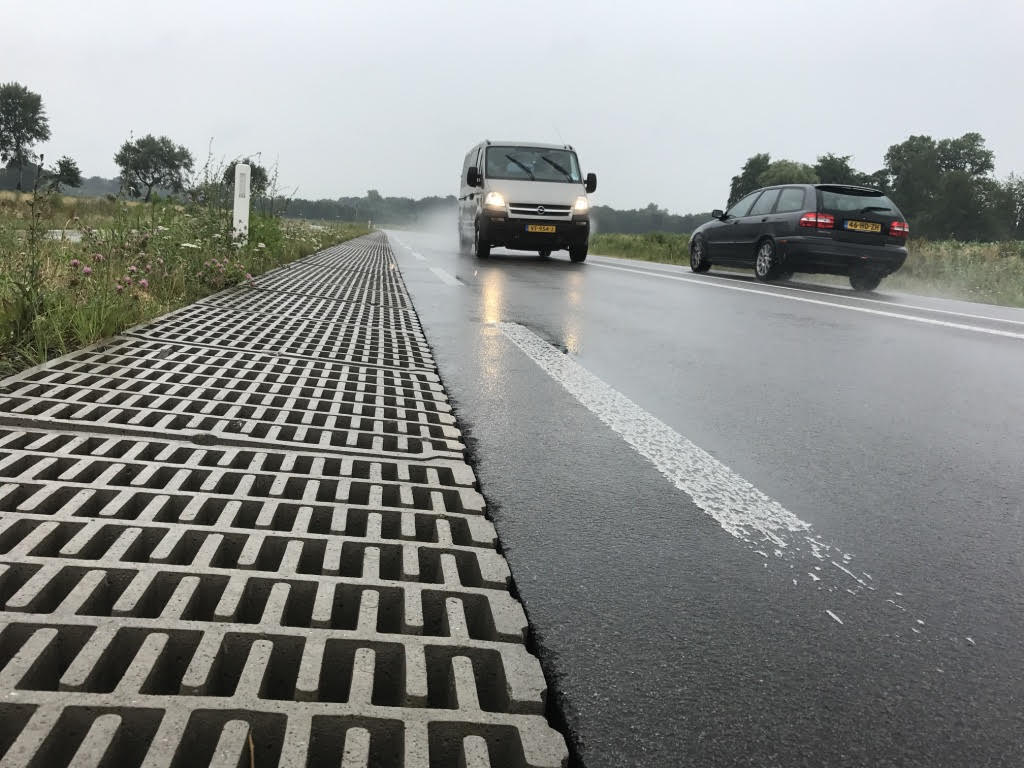
Many interesting start-ups have been presented here on IO over the past year. This is why we are reviewing a number of successful young businesses this summer. Bert Jan Danker from the start-up 4Silence tells us how the company is doing at the moment.
“We’re doing really well in these times of corona. There are several projects and tenders that we are carrying out for various municipalities and provinces in the Netherlands. On 1 January 2020, the WHIS®stone was included in the official calculation and measurement guidelines. This means that the WHIS®stone has been included in current legislation and has become a certified solution for noise reduction.”
“Apart from this, validation tests for the WHIS®wall are currently underway. At the end of this year, there will calculation legislation for the WHIS®wall as well. This is currently being worked out by the Dutch Organization for Applied Scientific Research (TNO) and the National Institute for Public Health and the Environment (RIVM), in collaboration with the Dutch Ministry of Transport, Public Works and Water Management (RWS) and the European Railway Agency (ProRail). Major steps have also been taken in other countries. Pilots have been carried out in the UK, Germany, and Belgium. All measurement results are excellent in these cases. The results and follow-up steps are currently being worked out in detail in this respect too. All clients are impressed with the operation and noise reduction capabilities of the product”. [/Update]
Not absorbing or blocking sound, but diffracting it so that it ‘evaporates.’ For years, 4Silence has been trying to show that it can be done. After years of struggling to convince skeptics and also comply with regulations, the company seems at long last to be able to reap the rewards. The basic concept is the so-called WHISstone. It is a concrete element which has grooves. A horizontal sound wave travels up through the grooves thanks to the collision of molecules. This leads to a noise reduction of 2.5-3 decibels.
CEO Eric de Vries (50) talks to Innovation Origins about the work of 4Silence.
What was the motivation behind starting 4Silence?
Our CTO Ysbrand Wijnant came up with it. He had been part of a project that dealt with the sound of tires on roads because of his background in mechanics and acoustics. The idea was to do something other than absorbing noise, e.g. noise-reducing asphalt or blocking noise with sound barriers. It turned out that diffraction would also work. More research followed, and a research team was set up to further develop it. I came on board because I had experience and knowledge of the market when it came to infrastructure.
Want to read more about start-ups? You can read all our articles in this series here.
What kind of work does 4Silence do?
We have designed a technique that is very efficient and cost effective. Our products are the WHISstone, the WHISwall and the WHIStop. The WHISstone is a diffractor that forms the basis. The material is not special, but its operation is. Sound is made up of waves that reach the concrete element next to the road in a horizontal direction. These sound waves get caught in the grooves and the sound travels upwards due to the molecules that are colliding. The wall and roof are features of this, which can also be combined with a sound barrier or screen. For example, the WHISstone is three times cheaper to buy and lasts three times as long as current noise-reducing, low-noise road surfaces.
Are there similar companies doing this kind of work?
No, not really. We are unique in the world and we have gotten a global patent.
What is the reaction to sound diffraction?
Disbelief. That it can be that simple. Residents think they’re being hoodwinked and can barely believe that there is no need for a four-meter high noise barrier based on our technology. Everybody says that we are doing a good job when it comes to innovation. However, in practice it turns out that you need a lot of time, persuasive power and perseverance.

What’s been the main obstacle so far?
The burden of proof, the regulations. Our technology is unheard of. There was therefore no protocol on how to assess it. The regulations were amended in the end. It took us four years to become legally approved. All kinds of bodies in the field of transportation and research wanted to test the value of diffraction themselves. There was almost no end to this.
The burden of proof still has to be validated abroad. But it is expected that this will happen more quickly, as much of the preparatory work has already been done in the Netherlands. However, other countries, such as Germany, do use a different noise calculation method.
The business case looks very good. The only thing we have to do is explain to investors that regardless of the length of time it takes to arrange everything, eventually it will all work out well. Once we are included in large projects, it is definitely worth the investment.
What will be the high point for 4Silence?
That we are incorporated into the legal standards that have been amended accordingly. It’s also the culmination, because it took such a long time. In the meantime, we have completed our first real sale in the Netherlands. And we are testing in Germany, England and Belgium.
What are your expectations for the coming year?
That we can capitalize on the commercial opportunities of our products in the Netherlands. But we also want a commercial roll-out of noise diffraction in other parts of Europe.
And where will 4Silence be in five years time?
By then we really will be a renowned company. One that is considered with its products to be a serious option for every noise problem.

